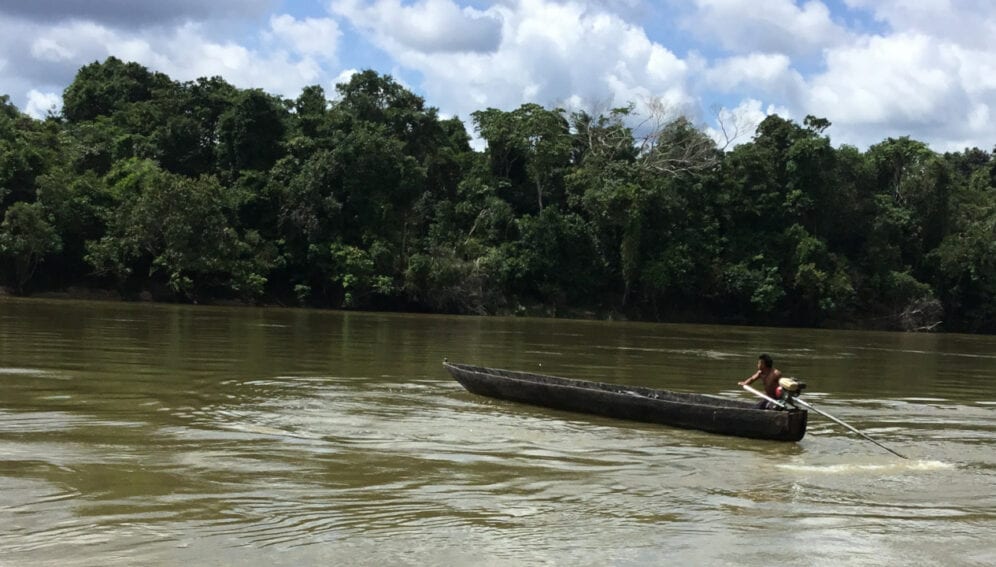12/07/21
Mercury and lead threaten Latin American communities

Send to a friend
The details you provide on this page will not be used to send unsolicited email, and will not be sold to a 3rd party. See privacy policy.
Intervention programmes are vitally needed to support Amazonian communities exposed to mercury contamination in Latin America, and children who are among those most affected by lead poisoning.
These are the conclusions of a review of studies conducted between 2016 and 2021, published in Current Opinion in Toxicology, which also highlights a lack of data to assess the true scale of the problem.
Exposure to lead and mercury is widely recognised as a global public health problem, with children in developing countries particularly impacted.
In the Amazon, mercury contamination is linked to artisanal and small-scale gold mining where it is used in the gold purification process. The toxic metal contaminates fish, which indigenous communities rely on heavily for food.
“Exposure to these toxic metals is preventable, but unfortunately exposed communities receive little or no state attention to counteract the problem.”
Jesus Olivero Verbel, researcher, University of Cartagena, Colombia
Lead contamination in the wider region is caused mainly by exposure to electronic waste, battery recycling, or the manufacturing of glazed ceramics, according to the study.
Study author Jesus Olivero Verbel, from the University of Cartagena, Colombia, said: “Exposure to these toxic metals is preventable, but unfortunately exposed communities receive little or no state attention to counteract the problem. And if we add to this the corruption linked especially to mining, the solution is far from being reached.”
Left unchecked, he added, mercury exposure among indigenous people in the Amazon “will endanger not only their own survival, but that of the Amazon itself, and with it that of the planet.”
In people living in Colombian Amazonian villages next to the Caqueta, Cotuhe and Apaporis rivers, mercury was detected in hair in levels of up to 23 μg/g (microgram/gram). This compares to the one μg/g threshold set by the US Environmental Protection Agency, and the 10 μg/g level considered high.
In Brazil, among the Yanomami community living next to the Uraricoera River, an average of 15.5 μg/g was detected.
“We need programmes that promote mercury-free gold extraction, especially in communities that have ancestrally carried out these activities, and to push education and environmental health, to tackle the problem with the support of science,” said Olivero Verbel.
In studies conducted in Mexico, Brazil and Uruguay, the highest blood levels of lead were found among battery recyclers in Mexico City — an average of 69 μg/dL (micrograms per decilitre). According to the US Centers for Disease Control and Prevention, anything above five µg/dl in the blood is considered high.
Two years ago, Mexico estimated lead contamination among children aged one to four years. Environmental epidemiologist Mara Tellez Rojo is a researcher at the Mexican Institute of Public Health, who did not participate in the study. She said: “We consider that 17.5 per cent of children (1.4 million) have lead poisoning. It is a very worrying situation.
“In Mexico, the main source of exposure is the use of glazed clay slab, which is handmade in domestic ovens and varnished with a lead-based glaze. This is the main source of exposure. But we know that there are many others such as mining, certain types of paints or electronic waste.”
In Montevideo, Uruguay, a recent study of 259 school children found up to 9.2 µg/dl of lead in the blood. In a fishing community in Tasjera, Colombia, on a sample of 554 children aged between five and 16 years old, the average was 8.9 µg/dl.
Even in low concentrations, the authors highlighted, studies have linked lead with cognitive disability in children, as well as metabolic, immune and even genetic alterations.
Although mercury has neurotoxic effects, researchers stressed the lack of information on the impacts of this pollutant, especially in ethnic communities.
Mexico is currently designing a national programme for the prevention of lead exposure. “We are advancing an epidemiological surveillance system,” said Tellez Rojo. “It is our main recommendation not only for Mexico but for (all) the countries of the region.”
















